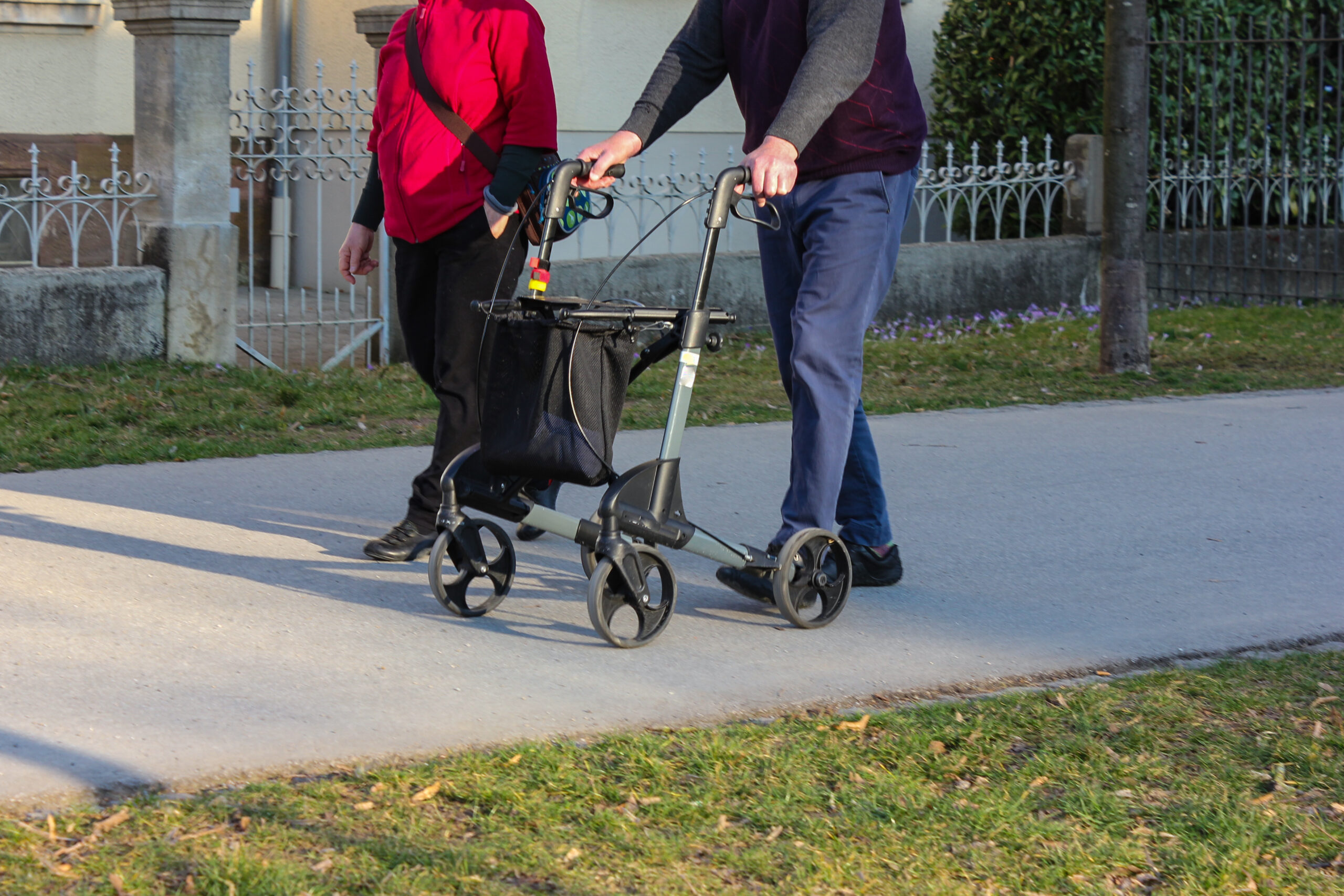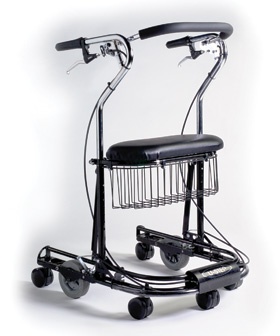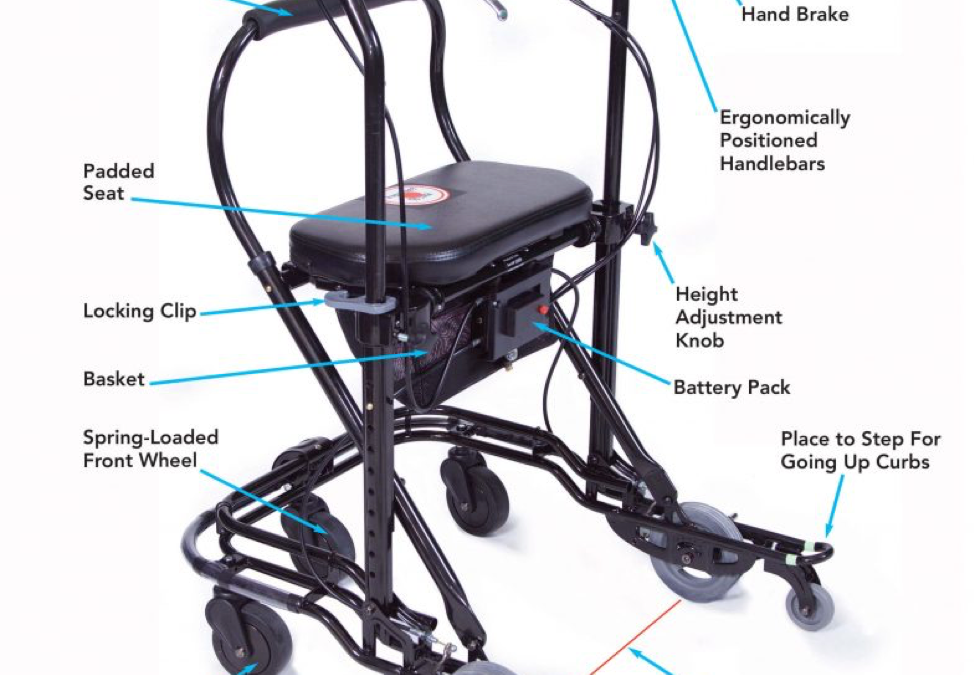What is the best walker for Parkinson’s disease (PD)? Maybe you are not there yet. Maybe you are hesitant to even approach the idea of a walker. Well, I have you covered. After nearly 20 years of working with people living with PD, I know how you might be feeling. The fear, the anxiety, and the downright NEED to deny you have a balance problem are very real. I hope you will give me the opportunity to share my thoughts with you and maybe give you a “view from a different angle”.
Parkinson’s disease (PD) is a progressive neurodegenerative movement disorder that can make walking difficult. Often times, there comes a point where someone needs to decide if it is time to start using a walker. I know for many, this is a really tough decision to make. Maybe for you, it is a resounding no. I get it. I hear it all the time. And I know, if you are like most of my patients who have Parkinson’s disease, this might fall on deaf ears. And that is totally ok. But hopefully, just maybe, I might help you to reframe your perception of “a disability”, “looking old”, and/or “giving in to the disease”.
A walker is NOT a beginning of the end
“I am afraid it will be all downhill once I start using a walker”. This is probably the most common response I hear when I bring up the “W” (walker) word.
This is probably the most common thing I hear when I even suggest to someone that a walker might be a good “option”. Yes, an option. Kind of like something you have on a list of choices. NOT an end all be all. NOT, something you will use every waking moment for the rest of your life. Just one of many options. Here is a hypothetical situation. Maybe you pull the walker out of the trunk to go to your grandson’s soccer game where you have to walk a longer distance on unfamiliar terrain. However, you do NOT use the walker for walking around the house or going to the store. A walker gives you the option to do something you might otherwise strategically avoid (thus “avoiding” any embarrassment of an unplanned stumble)
A walker PREVENTS a “decline”, it does not encourage it.
The most effective way to prevent the progression of movement-related symptoms in Parkinson’s disease is movement. This is why it breaks my heart to hear people say, “I just stopped doing “x” because I was afraid of falling. Or, “a walker will make me look disabled”. Maybe this is you. I get it. So, instead of having a walker as an “option”, you just avoid it. Believe it or not, avoiding activities is far worse.
So, I will ask you….what is more important? To avoid activities, (thus not look “crippled”) and miss out on opportunities that bring your life joy (and possibly also help to delay the onset of movement-related symptoms)? Or, is it possible to consider a walker as a “tool” to allow more movement? A walker can give you the freedom to do the things you love and with the people you love. More importantly, it will keep you moving! I will say it again because it is worth repeating. Movement is the number one antidote to slowing the progression of movement-related symptoms in PD.
Ok, so now that (hopefully) I have cleared up some of you biggest mental barriers to entertaining the idea of a walker, I want to share with you what is by far the number one walker on the market for PD. The walker was designed by someone who had PD and that alone is the reason why I believe, they left no stone unturned in the features on the walker.
In today’s walker market, you have many walkers to choose from. Many look the part, however, very few actually prevent falls and provide the stability necessary to walk with confidence. The U step walker sets itself above the rest. Before I dig into everything I LOVE about the U step, let’s break down the leading competition. That is the beloved four-wheel rollator. But is it? Let me break down the specs of a traditional walker versus the U-step and I think you will agree it is a “no brainer”.
The Four Wheel Walker or Rollator

Now, I am going to start with my least favorite walker on the market. I know, some of you live and die by this walker but I promise, I have plenty of reasons to claim that this is NOT meant for someone with PD.
The Brakes
The brakes are just all wrong for several reasons.
- Brakes Slip: They don’t always prevent the wheels from rolling. This usually starts to happen as soon as the wheels show any signs of wear. The brakes just can’t grip onto the surface of the tire. If you have PD, you know that one of the major problems is when your feet get moving, you brain can’t stop them. So breaks that slip? No bueno.
- Squeeze Handle to engage the brakes: You have to squeeze the handle to engage the breaks. Really? Who has enough time in the midst of a fall to remember to squeeze the brakes? And lets not even imagine what happens if you take your hand off for a second to reach for something and happen to take a step and can’t stop that forward momentum. Now you have to react fast enough to get your hand back to the handle and squeeze it to keep the walker still while you use it to regain your balance. Yikes!
The Seat
The four-wheel walker has a seat. This is great for those who need to take rest breaks when walking longer distances. The problem? The seat is located inside the walker. This space is where the user is supposed to be standing. With the seat occupying this space, the user must stand further back causing a forward bent posture. A forward bent posture is also one of the major problems that develop in later stages of PD. I say, you avoid anything at all costs that creates a forward flexed posture. And yes, that includes using a rollator.
Now, I know this sounds all doom and gloom, but it isn’t. There is a much better walker on the market and it is truly worth every penny.
The U-step Walker is the Best Walker for Parkinson’s Disease

The U step walker has solved most of the problems found in the traditional four-wheel walker. Let me break down all the things I LOVE about this walker and truly stand behind my claim that it is the best walker for Parkinson’s disease.
U Step Brakes
- The brakes are some of the most secure brakes on the market. I have tried to get the breaks to slip on the wheels and it is just not possible.
- One of the most genius features of the braking system is the “reverse” break. It is called a reverse break because you must squeeze the handle to actually unlock the brakes. Therefore if your hand comes off the walker the brakes automatically engage. This eliminates the need to have quick responsive hands when in the midst of a fall.
U Step Tension Lever
- The U step has a feature that allows the user to add tension to the wheels. So, for anyone who is suffering from what we call a festinating gait (feet start moving and you can’t stop them), this is an absolutely critical feature that is not offered on the four-wheel walker.
U Step Seat to Handle Position
The seat is smaller and is positioned in front of the handles allowing the user to keep the appropriate position between the handles
U Step Base Depth
The base is great because it extends behind the handles. This gives a person stability if they have a tendency to fall backward. When the user loses balance backward, the walker will not tip backwards. This combined with the secure breaks means it will not roll backward either. Smart.
Weight of the U Step
The U-step walker is heavier than the traditional rolling walker. Now, this can be a good AND a bad thing. This may make it more difficult to transport (lifting it in and out of a car). On the other hand, this is a small price to pay for the benefits it offers as far as stability. The added weight gives the walker added stability increasing its effectiveness to prevent falls.
More features specifically for someone with PD
Than this walker is the only one on the market that also offers additional features specifically for balance and movement problems with PD.
The Laser for Parkinson’s Disease
The laser is designed for those who suffer from freezing and difficulty initiating movement (both are characteristics of Parkinson’s disease). The light provides a visual target which is proven to help a person initiate a step
The Metronome for Parkinson’s Disease
The metronome provides an audible “tempo”. This audible cue has also been proven to help those who suffer from freezing episodes to regain a normal “tempo”. Parkinson’s disease affects motor planning (the brain’s ability to plan the desired movement in advance). The metronome has been proven to eliminate motor planning (simplified explanation). Instead of the brain having to “plan” each step, the person now just responds to the beat of the metronome. Genius. Right?
Price
The one downside to this walker is the price. This walker starts at about $400-$500 whereas the four-wheel walker can be purchased for around $200. However, what is the cost of a fall? The CDC (Center of Disease) reports in 2012 a cost of a fall injury was $34,294. So is a couple of hundred dollars worth it? I will let you decide.
AFFILIATE LINK DISCLAIMER: This site contains affiliate links and ads to purchase various products. When you click on links and ads to various merchants on this site and make a purchase, this can result in this site earning a commission. Affiliate programs and affiliations include, but are not limited to, the Amazon Associate Program.
Use Discount Code: orlandoneuro100 and receive $100 discount


Could this walker be used by someone who has had a stroke and only has the use of one hand?
Absolutey! The reason is because with this walker you can just sqeeze one break and it will brake both wheels 🙂 Make sure you use the coupon code orlandoneuro100
Are the small wheels problematic as far as tipping or bumpy terrain? I’m used to the larger wheels of a Drive Euro Nitro.
I have MS & not PD.
Sorry for the delayed response. I have not had anyone mention the small wheels are a problem. I do not think it would work on grass and/or sand, or loose gravel. I hope that helps!